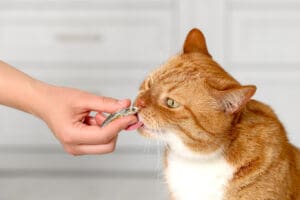Cats are wonderful animals and full of personality, but they can sometimes develop behavioural problems that can be challenging for owners. Here we provide you with a practical guide to understanding and managing behavioral problems in cats effectively:
Identification of the problem
Before addressing any behavioral problem, it is crucial to identify the underlying cause. Behavioral problems in cats can result from a variety of reasons, such as:
- Physical: Pain, illness, health problems.
- Environmental: Changes in the environment, lack of enrichment.
- Emotional: Stress, fear, anxiety.
- Social: Lack of adequate socialisation.
Observe your cat’s behavior and take note of when problems occur, what triggers those behaviors, and if there are specific patterns. 
2. Strategies for common problems
Problem: urine marking
- Cause: Territorial behaviour or stress.
- Solution: Make sure your cat has enough personal space and clean litter boxes. Consider sterilisation if it is not.
Problem: scratches on furniture
- Cause: Natural instinct to sharpen claws, boredom.
- Solution: Provide suitable scratching posts and interactive toys. Use natural repellents such as citronella oil on furniture.
Problem: aggressiveness
- Cause: Fear, territoriality, pain.
- Solution: Identify situations that trigger aggression and avoid them or manage the environment to reduce stress. Consult a veterinary behaviourist if necessary.
Problem: Excessive meowing
- Cause: Hunger, boredom, illness.
- Solution: Make sure your cat has access to adequate food and environmental enrichment. Program interactive games to keep him/her active.
3. Management methods
Positive reinforcement
- Praise and rewards: Reinforce good behaviour with praise, snacks and positive attention.
Environmental modification
- Environmental enrichment: Provide toys, scratching posts and raised areas for exploration and play.
Routines and consistency
- Mealtimes and playtimes: Establish daily routines to provide structure and predictability.
4. Consultation with professionals
- Veterinarian: For any sudden change in behaviour, consult a veterinarian to rule out health problems.
- Behaviourist: If problems persist or are severe, consider consulting a feline behaviourist.
5. Patience and understanding
Understanding and managing behavioral problems in cats requires patience and understanding. Observe how your cat responds to the strategies you implement and adjust as necessary. Remember that each cat is unique and may require different approaches. We hope this guide will help you better understand and manage behavioural problems in your cat! Implement these tips with love and dedication, and you will be on your way to a harmonious and satisfying coexistence with your beloved cat.








